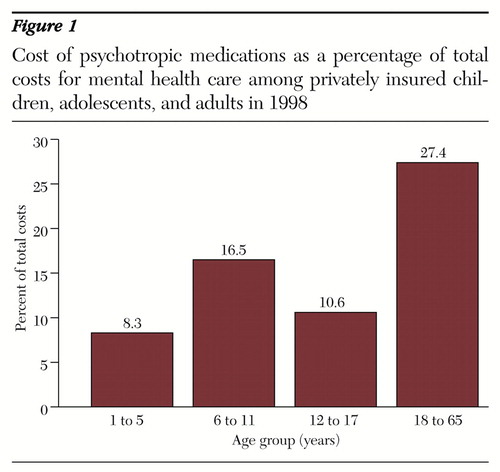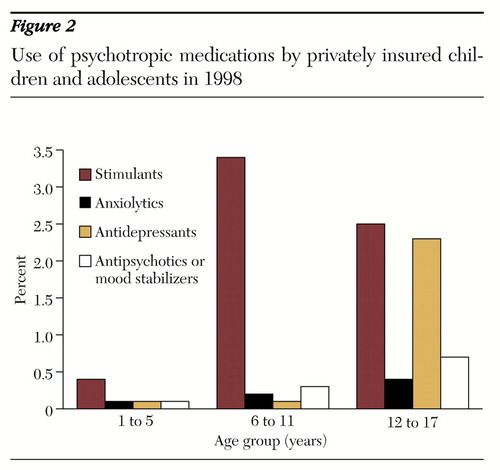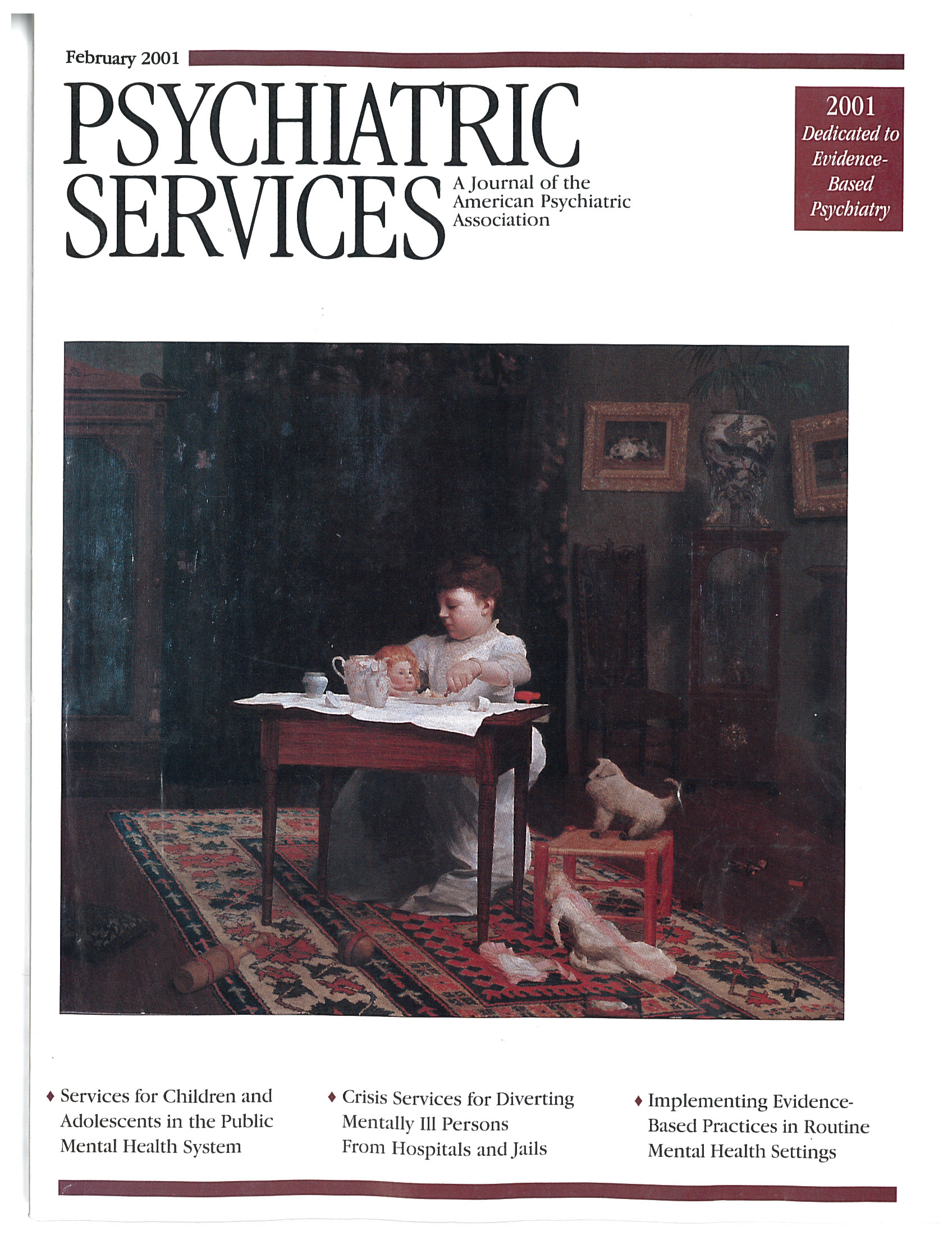Datapoints: Psychotropic Medication Costs Among Youth With Private Insurance in 1998
Recent studies have documented a substantial increase in the use of psychotropic medications by children and adolescents. Use of antidepressants by youths tripled between 1988 and 1996 (1), and similar increases have been seen in their use of other psychotropic medications (3). However, no data are available on the proportion of total mental health costs accounted for by use of psychotropic medications by youth.
This column presents 1998 cost estimates from more than 100,000 privately insured children in all census regions. Costs were calculated from claims data from 28 large employers. In 1998 mental health expenditures for children with private insurance totaled some $5.5 billion, excluding services provided by state and local agencies and not paid for by private insurance. Expenditures for psychotropic medications for children covered by private insurance were approximately $670 million, or 11.9 percent of total expenditures.
As Figure 1 shows, the proportion varied across age groups for children. About 4.3 percent of children received psychotropic medications, compared with 4.7 percent of adults (data not shown).
As Figure 2 shows, stimulants were the most common medication prescribed in all age groups among children. Antidepressants accounted for 50 percent of the total costs for psychotropic medications among those aged 12 to 17, compared with 10 percent among one- to five-year-olds and 28 percent among children aged six to 11.
We found that both the rates of use of psychotropic medications and their costs were lower among children and adolescents than among adults, despite the increased use of these medications among youths. At the same time, psychotropic medications now represent an appreciable part of children's total mental health costs. Most of the cost for these medications are for the use of antidepressants by adolescents and stimulants by younger children.
The authors are affiliated with Rand 1700 Main Street, Santa Monica, California 90407 ( [email protected] ).

Figure 1. Cost of psychotropic medications as a percentage of total costs for mental health care among privately insured children, adolescents, and adults in 1998

Figure 2. Use of psychotropic medications by privately insured children and adolescents in 1998
1. Zito JM, Safer D, dosReis S, et al: Patterns of antidepressant use in youths with Medicaid insurance. Presented at the annual meeting of the American Academy of Child and Adolescent Psychiatry, Oct 24-29, 2000, New YorkGoogle Scholar
2. Zito JM, Safer DJ, dosReis S, et al: Trends in the prescribing of psychotropic medications to preschoolers. JAMA 283:1025-1030, 2000Crossref, Medline, Google Scholar
3. Zito JM, Safer DJ, dosReis S, et al: Psychotherapeutic medication patterns for youths with attention-deficit/hyperactivity disorder. Archives of Pediatrics and Adolescent Medicine 153:1257-1263, 1999Crossref, Medline, Google Scholar



